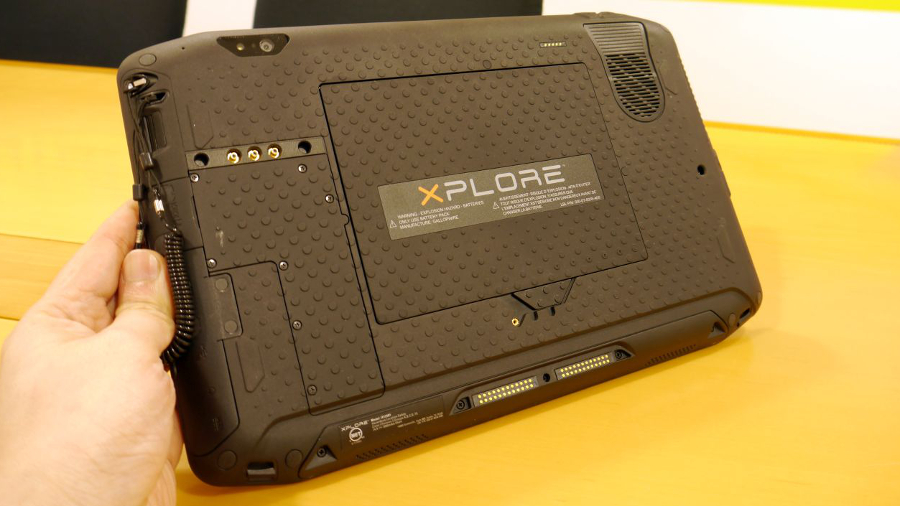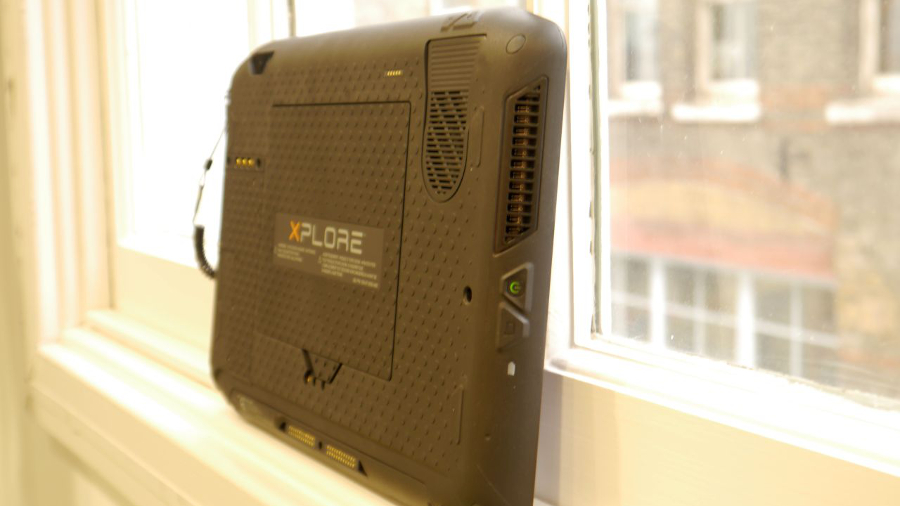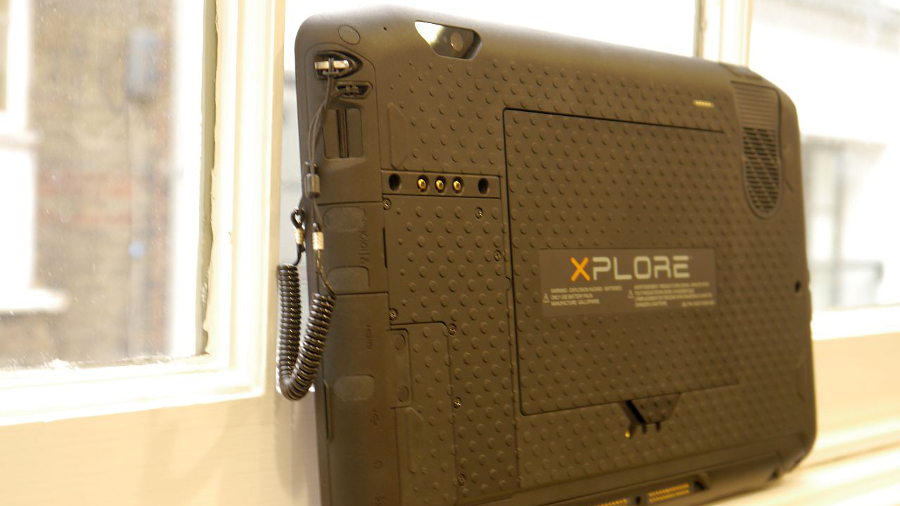Early Verdict
If you need a rugged tablet that can outpace most laptops and want it now, then the Xplore iX125 R1 should top your shopping list.
Pros
- +
Fastest ruggedized tablet available
- +
Superb display
- +
Bundled keyboard and kickstand work wonders
Cons
- -
Fan can be noisy
- -
The keyboard looks like an afterthought
Why you can trust TechRadar
Tablets are quietly proving to be a decent alternative to laptops, especially in the enterprise world and for niche sectors that require something solid, powerful and mobile.
Oh and forget about consumer tablets or those that come with rugged or hardened cases as they haven’t been designed from the ground up to survive the sort of battering that some of these devices undergo.
The Xplore iX125 R1 (sold in other markets as the XSlate R12) is an example of how far mobile computing has come over the past decade, featuring hardware that competes with and often exceeds what’s available on laptops with a comparable volume.
This is the latest model from a series originally launched by Motion Computing – Xplore acquired the company in 2014 and carried on with the range, which is still popular with businesses looking for rugged alternatives to the big names.
With an MSRP of £2,248 excluding VAT (around $2,820, AU$3,710) for the base unit (from Centerprise or Spirit Data Capture), this is an expensive piece of kit; but there’s more to it than just a big price tag.

And certainly don’t expect this to be your standard tablet. It weighs a massive 1.84kg – although that includes its bundled Bluetooth keyboard – which is around twice the weight of some ultraportable laptops on the market (like the Fujitsu Lifebook U937/P or the LG gram 15).
With a thickness of 18mm and footprint of 210 x 330mm, it is almost as large as some 15-inch laptops on the market, but rather than being overtly bulky, the iX125 R1 feels about the right size for what it provides – mainly thanks to its magnesium alloy frame.
Sign up to the TechRadar Pro newsletter to get all the top news, opinion, features and guidance your business needs to succeed!
As expected, most of the extra weight comes from the sturdy outer case, the connectivity options and the larger than average battery.
Xplore has adopted the sort of octagonal-like shape common to many rugged smartphones (such as the Homtom HT20), one that we call ‘4+4’ as it entails having four long sides, and four very short diagonal ones on the corners of the device, as it were.
The front of the tablet is adorned with three green lights on the left, and a 12.5-inch Full HD display featuring Corning Gorilla Glass 4 (which felt smooth to the touch thanks to the proprietary View Anywhere technology).
What this design does is reduce the potential level of shock to the corners of the tablet screen (which remains rectangular) thus hopefully avoiding any damage. With a quoted 800 nits brightness, the screen remained viewable even in direct sunlight (or what passes for sunlight in the UK’s winter).
There’s a 2-megapixel webcam located bang in the middle complete with two sensors and what looks like two microphones (there’s another one at the back).

Flip the slate over to uncover an 8-megapixel camera with a flash, four hidden magnets (to keep the stand and the Bluetooth keyboard in place) plus a host of connectors to accommodate the flurry of accessories that will truly exploit the power of the hardware inside the iX125. Those accessories range from a docking station to a data acquisition module with a barcode scanner.
The back of the tablet is covered with dozens of rubber dots to enhance grip. The keyboard connects to the tablet via Bluetooth, in theory, but we ran into some driver issues when trying to pair the two.
As for the keyboard quality itself, there’s nothing much to say about it except that it is great for short text entry; it feels cheap, has a built-in battery and a tiny touchpad.
A 3,080mAh/45Wh battery powers the tablet and can be removed – we just wish that it was easier to do so. You will need to remove gloves to perform this operation, and the battery does not pop out as easily as one would expect. Once it’s removed, you’ll find a microSD card reader and a SIM slot underneath.

A flap hides a Qualcomm 4G connectivity module (Sierra Wireless Airprime EM7455) as well as an M.2 SSD. Another flap protects the power port, plus there’s a full-size USB 3.0 connector, a headphone socket and an HDMI port. Wired Ethernet and a serial port – via a dongle – are also available behind a sealed rubber door that we couldn’t pry open.
There’s no USB Type-C port here, which doesn’t come as a surprise given how slow enterprises are at adopting new technology, especially when it comes to connectivity.
A power button, an air vent, a combo button (that emulates a Ctrl+Alt+Del combination), a fingerprint scanner, volume buttons and a wired Wacom active digitizer are scattered around the edges of the device.
The slate is IP54-rated which means that it is protected against dust and water spray from all directions with limited ingress permitted. In practice, we wouldn’t recommend risking it as the air vents at the back give direct access to the heatsink fan and the CPU.
But the fan and associated vents are in a sealed compartment away from the electronics. The heat is transferred through a heatsink that allows it to dissipate without allowing any moisture or dust into the system.
We had the opportunity to hear the full force of the fan a few times – and it does get noisy. This tablet is also MIL-STD-810G tested which means that it should withstand falls of around 120cm without damage.

In terms of the processor, the Xplore iX125 R1 packs the fastest available mobile model on the market – even if the Core i7-7500U will very soon be superseded by three other models, all of which have two-cores and 4MB cache (plus a 15W TDP) and will likely end up in rival devices.
The 14nm Kaby Lake CPU comes with an Intel HD Graphics 620 GPU clocked at 1.05GHz, supporting 4K at 60Hz (but not via HDMI sadly). It’s worth noting that this processor doesn’t support vPro according to Intel.
The device runs Windows 10 Professional but can be downgraded to Windows 8.1 Pro or Windows 7 Pro (although that route, oddly, only applies to the Core i5-6200U CPU). The two SKUs available have 8GB of DDR4 system memory and our sample came with a 256GB SanDisk M.2 SSD.
Xplore quotes a battery life of more than nine hours for the cheaper Core i5-6200U model, based on the bundled battery, with a charging time of 2.5 hours when the tablet is switched off completely. We haven’t had the opportunity to test it.
Early verdict
There’s plenty of competition on the market from the likes of Panasonic (with the ToughBook series) or Getac (with the RX10 for example). But the Xplore iX125 R1 is the first to market with Intel’s seventh-generation CPU, and for that it deserves to be highlighted.
This situation won’t last long, though, as competitors are very likely to launch their new flagship products at Mobile World Congress 2017, which will take place a few weeks from now in Barcelona. It might be a good idea to check out what else will be announced there.
Otherwise, if you are looking for the fastest possible rugged tablet on the market and don’t want to wait another quarter, then right now, the Xplore iX125 R1 is pretty much the only player to tick those boxes.

Désiré has been musing and writing about technology during a career spanning four decades. He dabbled in website builders and web hosting when DHTML and frames were in vogue and started narrating about the impact of technology on society just before the start of the Y2K hysteria at the turn of the last millennium.
What is a hands on review?
Hands on reviews' are a journalist's first impressions of a piece of kit based on spending some time with it. It may be just a few moments, or a few hours. The important thing is we have been able to play with it ourselves and can give you some sense of what it's like to use, even if it's only an embryonic view. For more information, see TechRadar's Reviews Guarantee.
